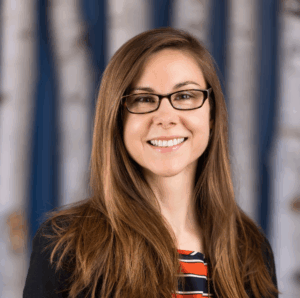The 2010s saw a decade of solid economic growth and low unemployment, but Americans don’t need macroeconomic data to know that has not translated into financial security for a large portion of us. In fact, the growth story masks some pernicious trends for many workers and their families. Wage growth, for example, has increased only 12% at the middle between 1979 and 2019; for the richest ten percent, wages rose 34% during that time. The modest increases for the majority of workers have been further undermined by the rapid increase in the cost of essentials like housing and childcare. The real economic story of the past decade is one of widely shared precarity. Thirty-nine percent of American families would not be able to cover an unexpected $400 expense without help, and 47% of Americans spend more than or equal to their income each month. If jobs aren’t solving these pressures, what should? The public safety net helps lift millions out of poverty, while millions more are left behind. Those who receive aid are forced to engage in painful trade-offs, including sacrificing a shot at longer-term financial security in exchange for short-term help. The drawbacks of the public safety net are made worse by their lack of coordination with the private benefits typically offered by employers. When do public and private benefits work together in a complementary way that helps Americans achieve financial security? When do those same benefits conflict and confound people’s financial lives? Who is considering the full network of benefits that are accessible to U.S. workers? Where can we find solutions and improvements that are effective, equitable, efficient, and scalable? Identifying the benefits people actually need from government and from employers
At the Aspen Institute Financial Security Program, we are thinking critically about the next generation of ideas, leaders, and collaboration that needs to happen in order to create a user-centric benefits system that is cohesive and works well for everyone.
Our benefits systems need a 21st Century upgrade, and it starts with an acknowledgement that safety net programs have functionally, if informally and haltingly, become part of the benefits package for the low-income workforce. Consider:
- One in nine full-time workers still earns below than the poverty line.
- One in five people participates in a safety net program.
- Job churn is a fact of life for low-income workers. One in five workers making $10 per hour experiences a transition from employment to non-employment over a three–month average.
The existing core of public benefits –such as the Supplemental Nutritional Assistance Program (SNAP, formerly known as food stamps), Temporary Assistance to Needy Families (cash welfare assistance), health care assistance, and critical tax benefits like the Earned Income Tax Credit (EITC)—is not easily aligned with what we think of as the existing private benefits system—employer-provided health insurance, retirement savings, and newer options like student loan repayment assistance and short-term emergency assistance. To tackle the realities of financial insecurity in America we need both systems – public and private – to work well together, to be delivered efficiently, and to support the real needs of striving families. Achieving that outcome is a substantial challenge. We will need to convene and connect with the brightest minds in order to achieve success, but more than that we need to reconsider who, exactly, we mean when we talk about consulting the experts. Centering the Conversation on Real Expertise Public benefits often come with qualifications or limits that force people to make decisions that trap them in cycles of poverty and insecurity. For example, a low-wage worker may be in a position to receive a raise but decide not to take it when that choice would cause them to lose even more in assistance. Still other states enact limits on savings that a person can have and still be eligible for benefits – even when that savings is essential for them to cover an unexpected expense like a car repair or medical expense. These experiences and their consequences can be foreign to policymakers. Leading thinkers across the public sector, businesses, academia, and the non-profit field all have a role to play in achieving the reform we need. However, there is another set of voices that should be central in the conversation: that of impacted individuals. People who experience the challenges understand the systems limits and make complex decisions around benefits and tradeoffs. These are the ones we should be listening to as we build the benefits systems to take us into the next century. Solving the benefits crisis by identifying innovation, lifting up leaders When benefits are designed well, families can move out of poverty, reduce stress, and become more productive. Employers can rest assured their employees encounter less emotional stress, reduce absenteeism, and may be more productive and likely to stay longer. Governments and the social sector can reap gains in efficiency, reduce bureaucracy, and see greater impact from the money they deliver to households. Make no mistake: the task is daunting. But we’re excited because from our vantage point, we see communities energized by testing new ideas at the local level. We recognize that innovative organizations, cities, states, agencies, and national policymakers are asking smart questions about how to engage their constituents in the search for solutions and using technology to lift up user voice. To change the old model, we need empowered voices from the edges of the safety net and labor market and better ears inside government. To accelerate this change we need to build better networks within and across these rising movements. Inaction is Costly The stakes are enormous. American families don’t separate their financial lives into distinct, unrelated silos. For millions of families, public benefits are a critical component of their household balance sheet—alongside wage income and employer-provided benefits. Too often, we build policy that fails to reflect this fundamental reality. We can’t fight poverty and support long-run economic success if we’re working with bad information. The Financial Security Program (FSP) at the Aspen Institute is dedicated to nothing less than a more inclusive economy with reduced wealth inequality and shared prosperity. That goal can’t be met unless public benefits are rebuilt to meet the real challenges of people’s lives. Now, we’re pleased to join the team at the Aspen Institute Financial Security Program, where we can apply these consumer insights to solving household economic challenges. Together at the Aspen Institute, we hope to build a new community of experts committed to understanding and acting on the real challenges facing vulnerable people and designing a better public safety net that works for workers in the twenty-first century – and, in doing so, build a necessary component of a truly inclusive economy. What can you do to re-imagine the safety net in America? If you see your community or organization reflected here, we’d love to hear from you. Click here to sign up for our new interest list, “Public and Private Safety Net List”, and let us know how you’d like to engage. And click here to tweet your ideas – we’re listening.


